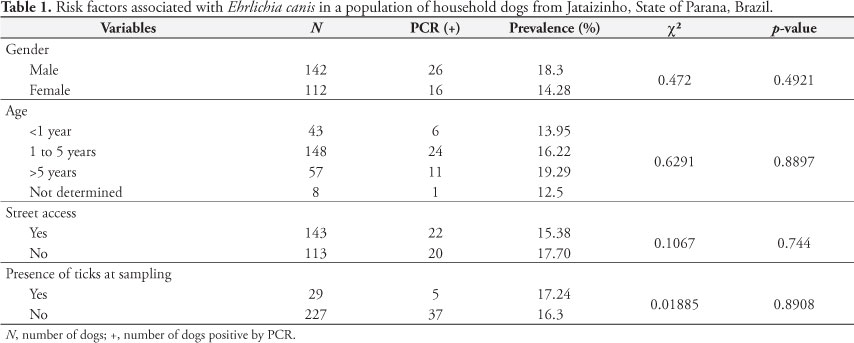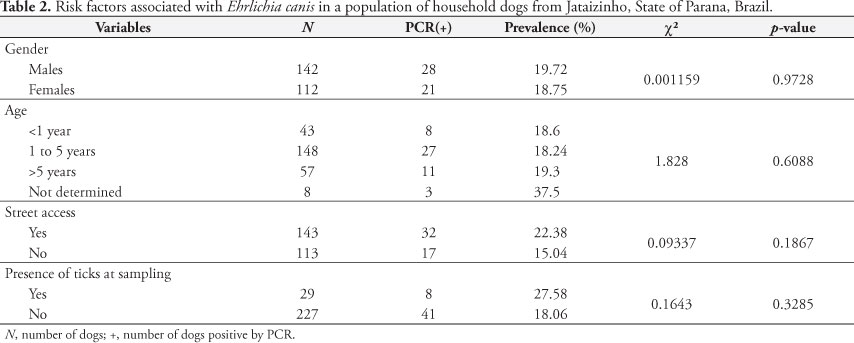Canine monocytic ehrlichiosis caused primarily by Ehrlichia canis and canine thrombocytic anaplasmosis induced by Anaplasma platys are important emerging zoonotic tick-borne diseases of dogs. There is evidence that these pathogens can also affect humans. This study evaluated the presence of E. canis and A. platys in blood samples collected from 256 domiciled dogs in the municipality of Jataizinho, located in north region of the State of Parana, Brazil, by PCR assay. The occurrence of E. canis and A. platys was 16.4% (42/256) and 19.4% (49/256), respectively; while 5.47% (14/256) of the dogs evaluated were co-infected by these two organisms. The presence of E. canis and A. platys was not significantly associated with the variables evaluated (sex, age, outdoor access, and presence of ticks during blood collection). Infection of dogs by E. canis was associated with anemia and thrombocytopenia, while infection induced by A. platys was related only to thrombocytopenia. Canine monocytic ehrlichiosis and canine thrombocytic anaplasmosis should be included in the differential diagnoses when these hematological alterations are observed during routine laboratory evaluation of dogs.
Canine monocytic ehrlichiosis; canine thrombocytic anaplasmosis; PCR; anemia; thrombocytopenia




